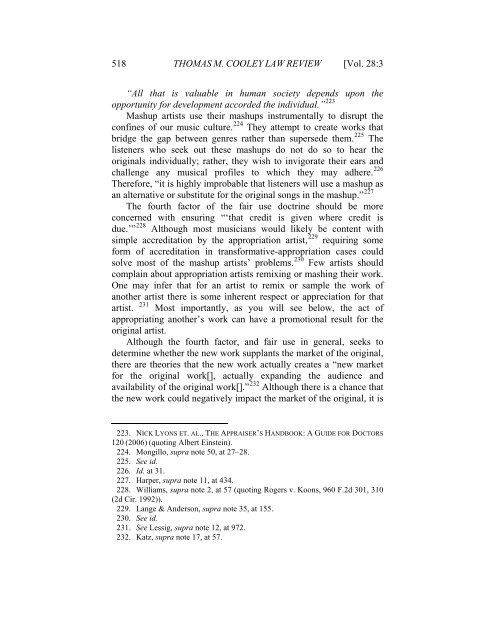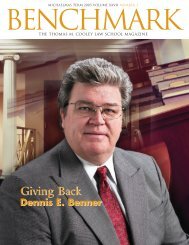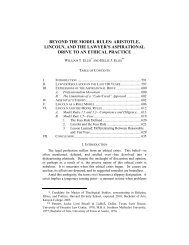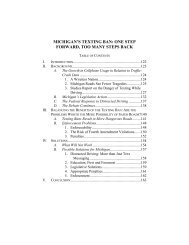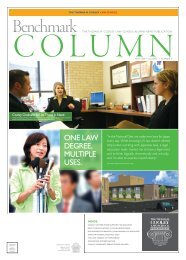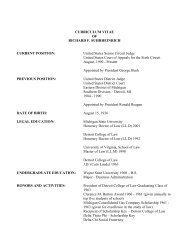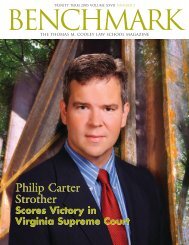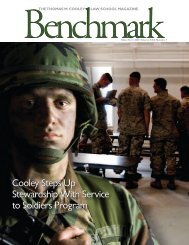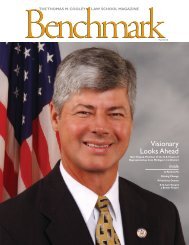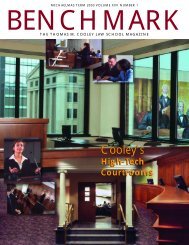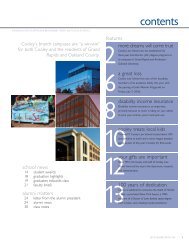Blanch It, Mix It, Mash It - Thomas M. Cooley Law School
Blanch It, Mix It, Mash It - Thomas M. Cooley Law School
Blanch It, Mix It, Mash It - Thomas M. Cooley Law School
Create successful ePaper yourself
Turn your PDF publications into a flip-book with our unique Google optimized e-Paper software.
518 THOMAS M. COOLEY LAW REVIEW [Vol. 28:3<br />
“All that is valuable in human society depends upon the<br />
opportunity for development accorded the individual.” 223<br />
<strong>Mash</strong>up artists use their mashups instrumentally to disrupt the<br />
confines of our music culture. 224 They attempt to create works that<br />
bridge the gap between genres rather than supersede them. 225 The<br />
listeners who seek out these mashups do not do so to hear the<br />
originals individually; rather, they wish to invigorate their ears and<br />
challenge any musical profiles to which they may adhere. 226<br />
Therefore, “it is highly improbable that listeners will use a mashup as<br />
an alternative or substitute for the original songs in the mashup.” 227<br />
The fourth factor of the fair use doctrine should be more<br />
concerned with ensuring “‘that credit is given where credit is<br />
due.’” 228 Although most musicians would likely be content with<br />
simple accreditation by the appropriation artist, 229 requiring some<br />
form of accreditation in transformative-appropriation cases could<br />
solve most of the mashup artists’ problems. 230 Few artists should<br />
complain about appropriation artists remixing or mashing their work.<br />
One may infer that for an artist to remix or sample the work of<br />
another artist there is some inherent respect or appreciation for that<br />
artist. 231 Most importantly, as you will see below, the act of<br />
appropriating another’s work can have a promotional result for the<br />
original artist.<br />
Although the fourth factor, and fair use in general, seeks to<br />
determine whether the new work supplants the market of the original,<br />
there are theories that the new work actually creates a “new market<br />
for the original work[], actually expanding the audience and<br />
availability of the original work[].” 232 Although there is a chance that<br />
the new work could negatively impact the market of the original, it is<br />
223. NICK LYONS ET. AL., THE APPRAISER’S HANDBOOK: A GUIDE FOR DOCTORS<br />
120 (2006) (quoting Albert Einstein).<br />
224. Mongillo, supra note 50, at 27–28.<br />
225. See id.<br />
226. Id. at 31.<br />
227. Harper, supra note 11, at 434.<br />
228. Williams, supra note 2, at 57 (quoting Rogers v. Koons, 960 F.2d 301, 310<br />
(2d Cir. 1992)).<br />
229. Lange & Anderson, supra note 35, at 155.<br />
230. See id.<br />
231. See Lessig, supra note 12, at 972.<br />
232. Katz, supra note 17, at 57.


